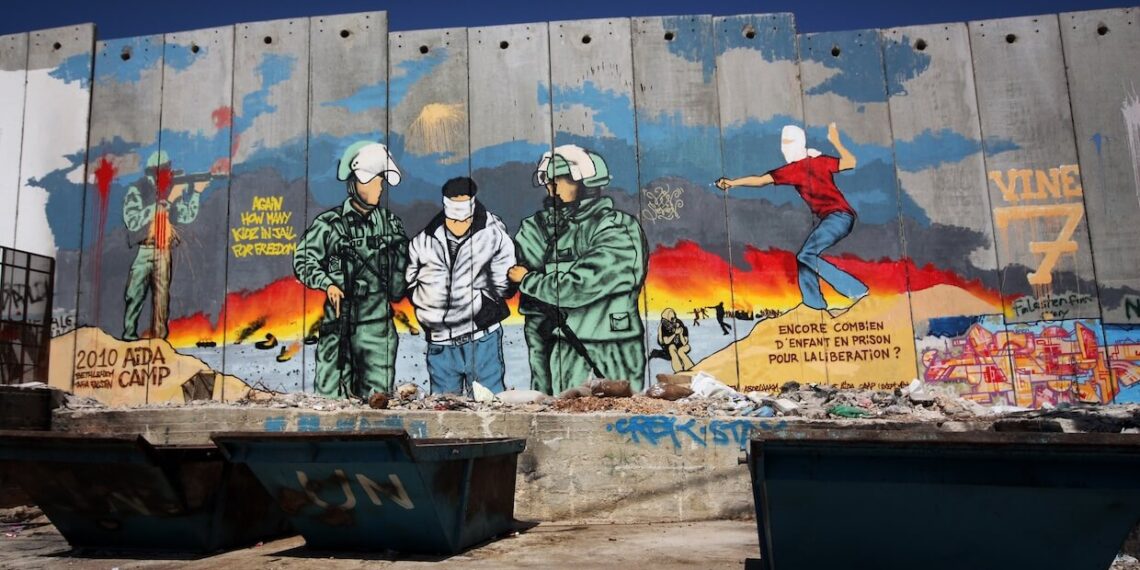As massacre and starvation content floods social media in the wake of Hamas’s October 7 attack, a new generation of users—especially teenagers—grapples with its psychological toll. In this Voice of Youth commentary, 19-year-old aspiring journalist Andrea Castelnuovo explores how platforms like Instagram, X, and TikTok have become both vital sources of information and sources of distress. Drawing on recent studies from Israel and Jordan, Castelnuovo highlights the anxiety, trauma, and emotional numbness that graphic imagery can induce in young viewers. He also shares his own experience of digital overwhelm and the importance of finding alternative, less triggering ways to stay informed. His article raises a crucial question for journalists: Can we raise awareness without harming those who bear witness?
By Andrea Castelnuovo*
Since Hamas’s attack on Israel on October 7, 2023, people have turned to platforms like Instagram, X, and TikTok to stay informed. However, many are struggling with the emotional toll of witnessing violent content.
The Israel-Palestine conflict is one of the most discussed topics on social media – now the main source of information for much of the Western population. Studies show that people prefer following independent journalists on platforms like Instagram and TikTok over reading mainstream outlets like the BBC, Fox, and Sky News – often criticized for a perceived pro-Israel bias. Content on social media is usually more direct as journalists share raw pictures and videos that make the news easier to grasp. However, many viewers – teenagers in particular – are triggered by this approach.
In the article “It matters what you see: Graphic media images of war and terror may amplify distress” by the Proceedings of the National Academy of Sciences of the United States of America (PNAS), two researchers examined how graphic content can pressure governments to act – but also emphasized how often its emotional impact on viewers is overlooked.
Cyber psychology researchers Liat Franco and Meyran Boniel-Nissim studied the psychological, physical, and mental toll – along with coping strategies – among teenagers in northern Israel exposed to war content on social media. Their symptoms included anxiety, sleep disturbances, and shifts in political views. Based on interviews with thirty-one adolescents aged 13 to 15 in northern Israel, the study found that many teens were becoming emotionally numb – a defense mechanism to shield themselves from ongoing trauma.
A similar pattern emerged in research led by Dua’a Al-Maghaireh and colleagues, who studied acute stress symptoms among Jordanian teenagers. Nearly half of Jordan’s population has Palestinian roots, which intensifies the emotional impact of the content they view. All 180 students interviewed said they watched Gaza-related news on social media, with 61% consuming it for more than three hours a day. All of them reported viewing content on YouTube – a platform where footage is especially graphic and unfiltered. As a result, 70% described themselves as highly stressed, and only 11% reported low levels of stress. Common feelings included sadness, shock, and hopelessness.
One teenage boy recalled his first time seeing images of bombings in Gaza: “I was very shocked by the scenes of killing, blood, and destruction of homes – and the people inside them. I have never seen such scenes before.”
Another said the emotional weight had affected his relationships: “After I watched news footage of the Gaza attack on social media and described it to my family and friends, my friends became very sad, and there was no laughter like before. Also, my house became gloomy.”
As a 19-year-old aspiring journalist, I care deeply about staying informed – but also about protecting my mental health. Recently, I deleted Instagram, as its content made me anxious and triggered my dissociation. Being exposed to graphic imagery every day left me feeling hopeless and powerless – too small to make a difference. Since I started listening to podcasts and reading long-form articles, I have managed to stay informed without feeling overwhelmed. This approach may not work for everyone, but for people like me – who want to stay aware without burning out – it is a valuable starting point.
The main question remains: Is there a way journalists and content creators can sensitize their audience without harming them?
(*) Andrea Castelnuovo is a nineteen-year-old aspiring journalist from Italy. He studied languages and literature in high school, with a focus on English, German, and Chinese. In 2024, he attended NHSMUN in New York City, where he gained insight into international law and the importance of journalism. Email: castelnuovo.andrea2006@gmail.com


